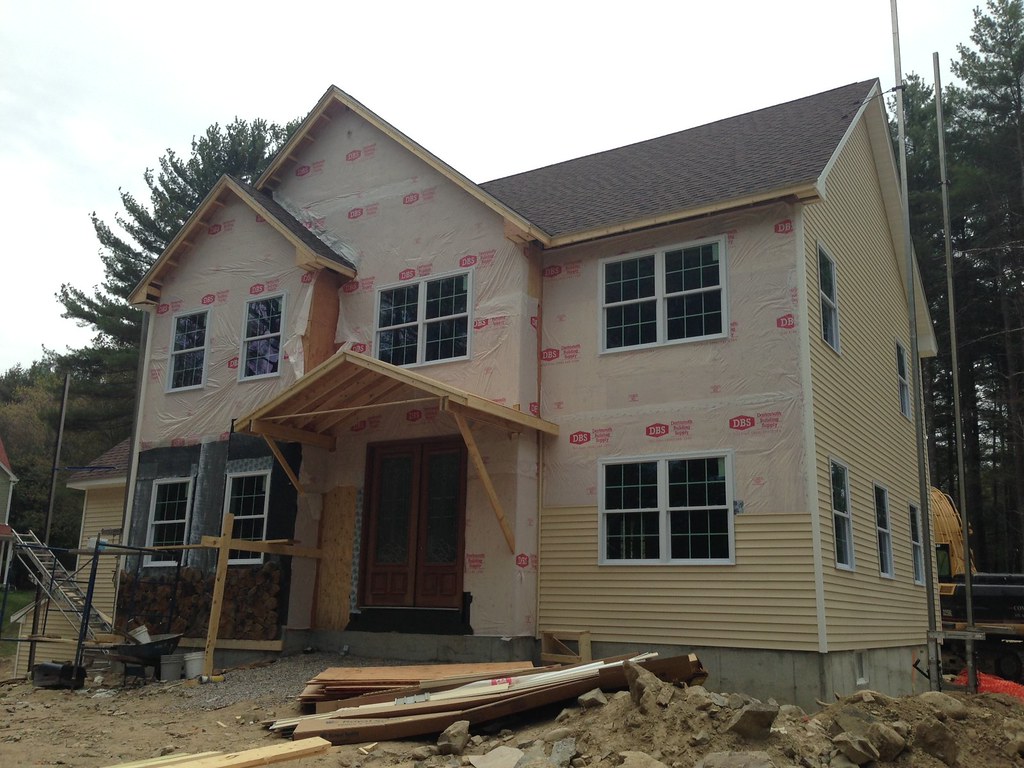New House – A diary (5) - Specifications
Hello, it has been sometime since we last updated this topic. Our house construction, as you can see from the photo taken recently, has progressed nicely and is scheduled to be finished in a month. We are excited and have learned a lot of lessons during the process. In this article, we want to go back to the subject of negotiating the specifications of house and reflect those lessons.

Building a new house is very different from buying an existing dwelling. You can literally design it as your dream home, providing within the budget. Correspondingly, building a house is also stressful and requires lots of engagements. Negotiating the specifications is the start point of such a journey and often can save or cost a lot in the later stage. Like many home owners, we owned a house before and accumulated some experiences from doing DIY projects, with some of which are pretty significant. Even so, we still had quite a few mistakes or omissions during the specs negotiation. Those mistakes really hurt. Because any extra requirements after the specs are set can cost much more as a builder will charge more, his contractors will charge more since they are “additional”. All these fees get passed to the buyer.
So what is a specs? A specs is functional specifications include many sections including doors, windows, plumbing, electrical, heating, insulation, interior trim and doors, cabinet and bathroom vanities, appliances, floor coverings, sundecks, landscaping, etc. Along with the specs, design drawings are also attached as part of the package. From different builders, some may provide relatively flexible specs while the others often don’t give much room for negotiation. Regardless, one should review the specs carefully and minimize any future revision.
Our builder told us, in almost all the houses he has built, there are more or less around 10% cost overrun because of the later revision of specs. So I guess we are not alone. The specs often list items with the same function from different rooms to a single category. In retrospect, a good approach to minimize the cost overrun is due diligence. The buyer should research the specs from room to room, and dissect the specs in such a way enabling one to visualize the house and avoid potential loopholes. For example, taking the mater bedroom as example, one should think through the flooring such as what type of floor and square footage will be used; lighting such as how many lights should be installed, windows such as the quantity and sizes of windows should be installed, molding such as the type and length of molding is needed. If you live in a house now, compare the specs with the existing house and you may find some discrepancies that could save you trouble in advance. Such an approach, though maybe labor-intensive, can ensure all the details are thought through.
Other aspects, such as negotiating allowance, are more obvious and won’t be further discussed here. I hope the information provided is helpful. Thanks.

Building a new house is very different from buying an existing dwelling. You can literally design it as your dream home, providing within the budget. Correspondingly, building a house is also stressful and requires lots of engagements. Negotiating the specifications is the start point of such a journey and often can save or cost a lot in the later stage. Like many home owners, we owned a house before and accumulated some experiences from doing DIY projects, with some of which are pretty significant. Even so, we still had quite a few mistakes or omissions during the specs negotiation. Those mistakes really hurt. Because any extra requirements after the specs are set can cost much more as a builder will charge more, his contractors will charge more since they are “additional”. All these fees get passed to the buyer.
So what is a specs? A specs is functional specifications include many sections including doors, windows, plumbing, electrical, heating, insulation, interior trim and doors, cabinet and bathroom vanities, appliances, floor coverings, sundecks, landscaping, etc. Along with the specs, design drawings are also attached as part of the package. From different builders, some may provide relatively flexible specs while the others often don’t give much room for negotiation. Regardless, one should review the specs carefully and minimize any future revision.
Our builder told us, in almost all the houses he has built, there are more or less around 10% cost overrun because of the later revision of specs. So I guess we are not alone. The specs often list items with the same function from different rooms to a single category. In retrospect, a good approach to minimize the cost overrun is due diligence. The buyer should research the specs from room to room, and dissect the specs in such a way enabling one to visualize the house and avoid potential loopholes. For example, taking the mater bedroom as example, one should think through the flooring such as what type of floor and square footage will be used; lighting such as how many lights should be installed, windows such as the quantity and sizes of windows should be installed, molding such as the type and length of molding is needed. If you live in a house now, compare the specs with the existing house and you may find some discrepancies that could save you trouble in advance. Such an approach, though maybe labor-intensive, can ensure all the details are thought through.
Other aspects, such as negotiating allowance, are more obvious and won’t be further discussed here. I hope the information provided is helpful. Thanks.
have learned a lot from your blog. Thanks.
ReplyDeleteNike Air Max 270
ReplyDeleteJordan 9
Red Bottom Shoes
Jordan 4
Jordan 11
Pandora Jewelry
Yeezy boost 350 v2
Jordan 11
Pandora
Ashley20180915